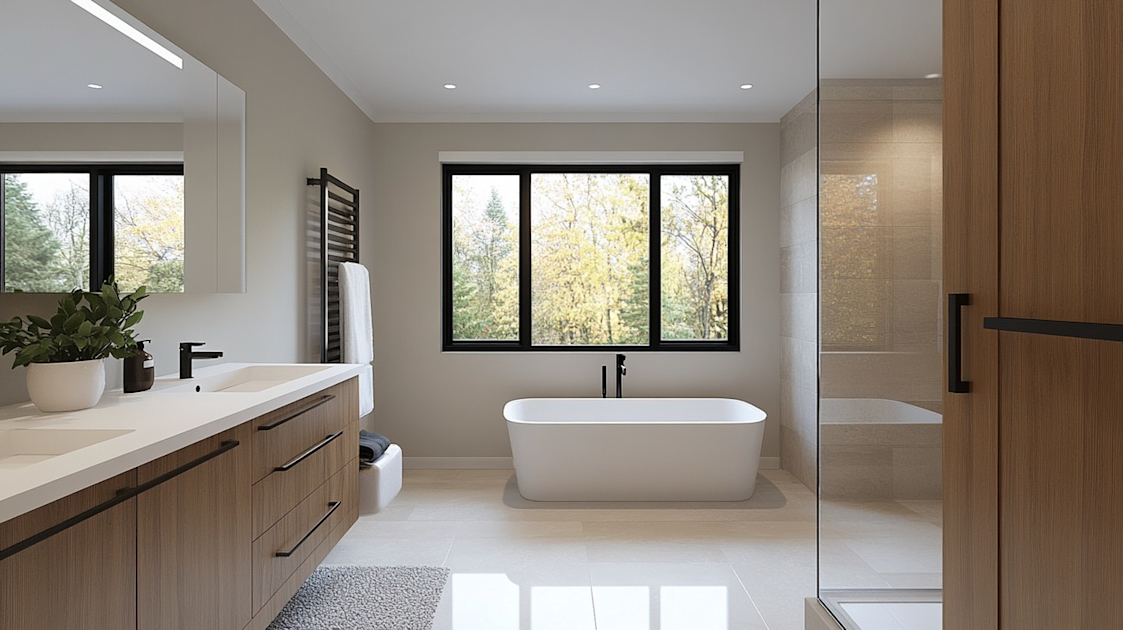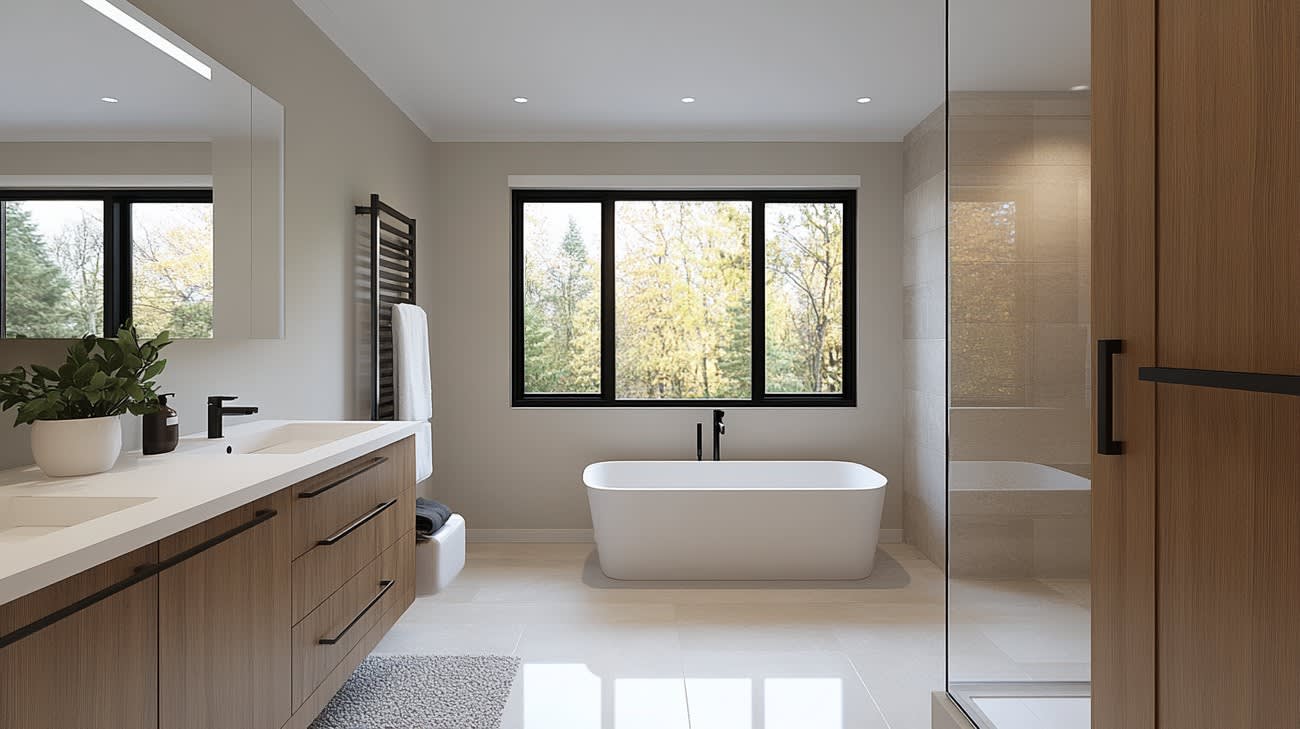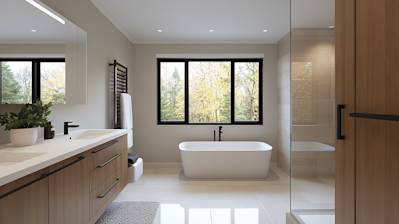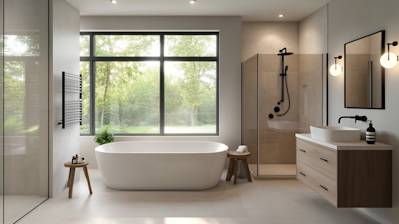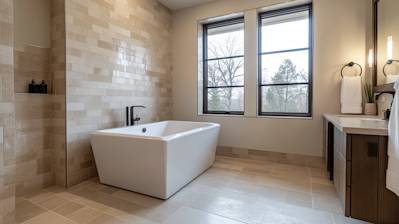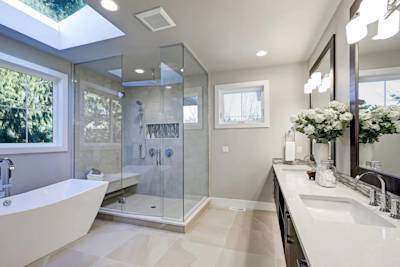If you're considering an expansion to your living space, determining the cost to add a bathroom can influence your decision tremendously. Whether you're planning on replacing an old bathroom or adding a new one to increase the value of your property, you'll need to have an idea of the financial obligation you're about to undertake. This blog will provide you with a comprehensive guide on bathroom addition costs.
Factors Influencing the Cost of Adding a Bathroom
Various factors determine how much you will spend when installing a new bathroom. Let's delve into them.
- Size of the Bathroom: The bigger the bathroom, the more materials and labor it will require, subsequently driving up the cost.
- Quality of Materials: The cost considerably varies depending on whether you choose standard or high-end fixtures.
- Plumbing: If the new location requires significant plumbing work, the cost will increase.
- Professional Services: If you hire professionals for every part of the project, such as designers or architects, your costs could be substantially higher.
Cost Breakdown of Adding a New Bathroom
The cost of adding a bathroom generally ranges from $3,000 for a simple conversion of existing space to $25,000 or more for a new addition to your house. Here is a detailed cost breakdown:
Basic Half-Bath or Powder Room
A half-bath, also known as a powder room, typically includes a sink and a toilet.
- Estimated Cost: $3,000 - $5,000
Full-Bath Conversion
A full bathroom typically requires more space and includes a shower or a tub in addition to a sink and a toilet.
- Estimated Cost: $7,000 - $15,000
Upscale Bathroom
This option typically includes a separate tub and shower, two sinks, a toilet, and more luxury features, such as heated floors.
- Estimated Cost: $25,000 - $40,000+
One-Time versus Recurring Costs in Bathroom Addition
When determining the cost to add a bathroom, it's crucial to differentiate between one-time and recurring costs.
One-Time Costs
- Construction and Installation: This entails demolition, framing, plumbing, and electrical work.
- Fixtures: This consists of essentials like sinks, toilets, bath, and/or shower.
- Finishes: This includes tiles, countertops, painting, lighting, and accessories.
Recurring Costs
- Maintenance: Keeping your bathroom in top condition requires regular maintenance, such as painting and repairing fixtures.
- Utilities: Your water and electricity bills are likely to increase with an added bathroom.
Saving on Bathroom Addition Costs
With appropriate measures, it's possible to save on some bathroom addition expenses. Here are a few tips:
- Opt for mid-range fixtures to trim down your spending.
- DIY where possible, e.g., painting and tiling. However, leave complicated tasks like plumbing and electrical work to the professionals.
- Source for materials yourself to avoid any mark-ups that contractors may apply.
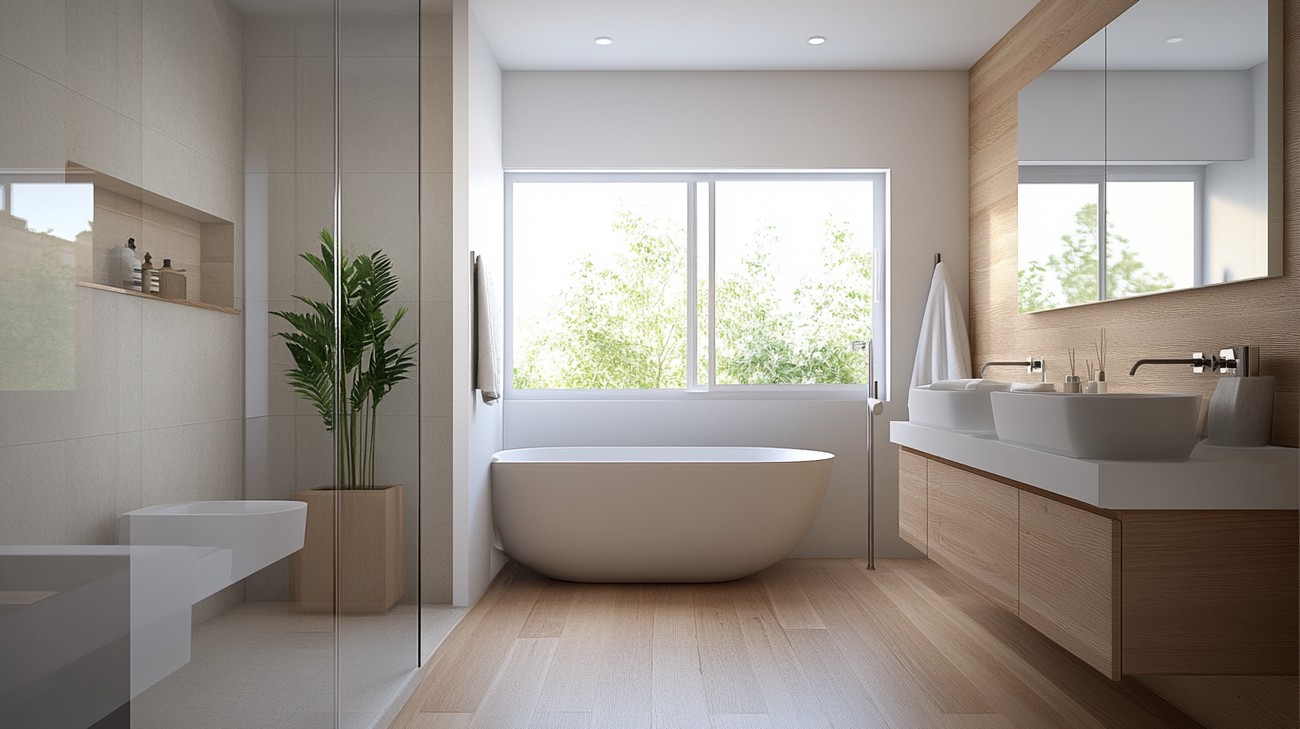
Frequently Asked Questions about Cost To Add A Bathroom
How do location and space affect the cost of adding a bathroom?
The location of the proposed bathroom in your home could significantly affect the total cost of the project. Adding a bathroom in an existing space such as a spare bedroom or basement typically costs less compared with expanding your home's footprint or adding a second story. Space also matters, as a larger bathroom naturally requires more materials and potentially more complex plumbing or electrical work.
How does the choice of fixtures influence the cost to add a bathroom?
Your choice of bathroom fixtures can significantly affect the overall cost. Choosing high-end or custom fixtures will increase the cost, while opting for standard, off-the-shelf options can keep costs down. Items like sinks, toilets, showers, bathtubs, and faucets will vary in price depending on their quality, brand, and material.
Can the cost of adding a bathroom increase due to unexpected issues?
If your project involves complications, like correcting plumbing issues or electrical work, or removing asbestos, this could trigger unexpected costs. It's good practice to set aside an additional 10% - 20% of the total estimated cost for unexpected issues that may arise during the process.
What is the cost of adding a half bathroom?
A half bathroom, also known as a powder room, typically includes a sink and a toilet. The cost to add a half bathroom can range anywhere from $5,000 to $25,000. Factors influencing this cost include the finishes and fixtures you choose, as well as the complexity of the plumbing and electrical work needed.
How much would it cost to add a master bathroom?
Designing a new master bathroom can cost anywhere from $10,000 to $100,000 or more. The wide range heavily depends on factors like size, feature inclusivity (like walk-in shower, dual sinks, private toilet, etc.), and whether it's a renovation project or a new addition to the house.
What's the cost difference between adding a bathroom indoors versus outdoors?
Outdoor bathrooms typically cost less than indoor ones -- considering an outdoor bathroom often doesn't require extensive plumbing or electrical work, and it often has fewer features. The average cost of an outdoor bathroom ranges from $15,000 to $50,000, while the price of an indoor bathroom can go all the way up to $75,000 or more.
Does labor expense affect the overall cost of adding a bathroom?
Labor can be a significant portion of the project cost, often accounting for 40-60% of the total expense. Factors impacting labor cost can include the complexity of the job, the local labor rates, and whether you're hiring a general contractor, a plumber, an electrician, or other specialists.
How does the cost of adding a bathroom with a shower compare to one without it?
Adding a shower will significantly increase the total cost of installing a bathroom. Prices for a shower alone can range from $1,000 for a basic, stand-up shower to $10,000 for a luxury, walk-in model. Thus, a bathroom without a shower would evidently cost less in comparison.

Pros of the Cost to Add a Bathroom
Increased Home Value
One of the significant pros to the cost of adding a bathroom is the potential increase in the home's value. While the upfront expenses may seem high, a well-designed and strategically placed bathroom can boost a home’s market worth substantially. This can especially be an advantage if you're considering selling your home in the future. The return on this investment is one reason many homeowners decide to bear the initial costs of adding a bathroom.
Enhances Functionality
Another pro of adding a bathroom despite its cost is the increase in the home's functionality. It can be a practical solution for large families or shared living spaces where a single bathroom can result in scheduling conflicts and morning rush hour queues. Spending money to add a bathroom can streamline household routines and decrease stress levels associated with limited bathroom access, substantially improving the quality of life at home.
Elevated Convenience and Comfort
Paying to add a bathroom could elevate the convenience and comfort of your home. This could be a notable advantage for households with aging members or individuals with mobility issues who may find navigating stairs difficult. Having a bathroom on each floor or near the bedrooms can make life easier for everyone, making the expenditure well worth it.
Potential for More Privacy
If privacy is a concern, it might be worth spending the money to add an extra bathroom. An additional bathroom can offer residents more privacy, especially in multi-generational households or homes with roommates where shared spaces can lead to potential conflicts.
Cons of the Cost to Add a Bathroom
While there are several pros associated with the cost of adding a bathroom, there are also some cons to weigh into your decision.
High Upfront Costs
The most obvious con is the high upfront costs associated with adding a bathroom. Depending on the bathroom's size, location, and design, a homeowner could be looking at spending thousands of dollars. This includes costs related to plumbing, electrical work, fixtures, and construction. Without proper budgeting, these costs can quickly spiral out of control.
Potential for Overcapitalization
While adding a bathroom can increase home value, there is also the risk of overcapitalization. This is when the cost of renovation exceeds the amount of value it adds to your home. If you're adding the bathroom primarily as an investment to boost property value, it's important to consider the housing market in your area and how much value an additional bathroom is likely to add.
Requires Significant Time and Disruption
Adding a bathroom is not a quick or easy project. It requires significant time and disruption to everyday life. Depending on the complexity of the project, the addition could take weeks or even months to complete. This could involve noise, dust, and a potential invasion of your privacy with contractors in your house throughout the project duration.
Space Constraints
Depending on the size and layout of your home, you may not have the necessary space to add another bathroom without compromising other areas of the home. This could mean losing a bedroom, office space, or closet space to accommodate the additional bathroom, which could negatively impact your living situation.
Unexpected Issues
With any construction project, there's the potential for unexpected issues or complications to arise, including finding problems with the plumbing or structural problems that need to be addressed. These issues can increase costs, extend the project timeline, and add stress.
Increased Ongoing Costs
Finally, adding a bathroom will inevitably lead to increased ongoing costs in water and electricity usage. Increased usage will result in higher utility bills for the household, which should be factored into the decision when considering the cost to add a bathroom.

Myths / Misconceptions about the Cost to Add a Bathroom
Myth 1: Adding a Bathroom is Always Expensive
Many homeowners believe that adding a bathroom to their house is always a high-cost endeavor. However, this is not necessarily the case. Depending on various factors such as the type, size, and location of the bathroom, costs can actually be quite controlled. Small half-baths or powder rooms, for example, can be more economical because they require fewer fixtures and less square footage.
Myth 2: The Real Cost Comes from the Plumbing and Fixtures
While the plumbing and fixtures can certainly contribute to the overall cost, it is a misconception to assume that they are the most expensive aspects. Things like labor, materials, and permits can make up a significant portion of the total cost. Depending on where you live, permitting and inspections can get quite expensive. Also, if the plan involves moving existing plumbing lines, electrical wiring, or HVAC ducts, the cost can increase significantly.
Myth 3: It's Cheaper to Do It Yourself
It's easy to believe that managing the project on your own could save you a lot of money. However, unless you have professional experience in construction and plumbing, this idea could end up costing you more in the long run. Mistakes made during the process can lead to expensive repairs down the line. Furthermore, certain tasks require licensed professionals for legal and safety reasons.
Myth 4: You Can Predict the Exact Cost Beforehand
One of the common misconceptions is that homeowners can predetermine the exact cost before construction begins. Yet, this is often not accurate because many variables can affect the final price. Unforeseen complications, unseen repairs, the fluctuating price of materials, or even changing your mind about certain finishes or fixtures can all add additional costs.
Myth 5: The More Expensive, The Better the ROI
Contrary to this belief, a higher cost does not necessarily translate into a higher return on investment when selling. It is crucial to consider the value relative to other homes in your neighborhood. Creating an extravagant bathroom in a moderately priced neighborhood might not yield a high ROI. Considering the compatibility of your addition with the rest of the houses in your surrounding area can influence your return.
Myth 6: A Bathroom Addition Won't Affect Property Taxes
Adding a new bathroom to your home is considered a permanent improvement, which can potentially lead to an increase in property taxes. The basis for property taxes is the assessed value of your property, which increases with home improvements. However, this varies greatly depending on local regulations and should not deter you from enlarging your living space.
Myth 7: All Bathroom Additions Add Value to the Home
While generally true, this is not a universally applicable rule. The value a bathroom addition brings to your home depends on various factors. If your house already has numerous bathrooms relative to bedrooms, adding another might not significantly increase the home’s value. The style, quality of work, fixtures, and finishes can also affect how much value is truly added.
Myth 8: There's No Way to Save Money while Adding a Bathroom
It may seem like there is no compromise when it comes to saving money during a bathroom addition. However, smart planning and budget shopping can help combat costs. Choosing mid-range fixtures instead of high-end ones, strategizing with your contractor and planning ahead for unforeseen issues can reduce over-spending. Opting to add a bathroom in existing spaces, such as basements, where plumbing lines exist can also help cut costs.
These are a few of the common myths that often come up when considering the cost to add a bathroom. Being aware of these misconceptions can help homeowners make more informed decisions about their renovation projects and ensure that their new bathroom additions are well within a reasonable and expected budget range.
Summary
Adding a bathroom to your home is a project with multiple benefits, from improving your day-to-day lifestyle to increasing the potential selling value. However, the cost to add a bathroom can be a significant investment, with a myriad factors determining the final budget. Carefully considering your precise needs and exploring cost-saving strategies can help balance the wanted luxurious touches and the purse strings.
Let's break it down, the cost to add a bathroom isn't minor - but it's totally worth it. It’s like having an extra pair of hands in the morning when everyone is trying to get ready at the same time. Plus, it totally gives your real estate value a big boost. You might be shelling out a good chunk of change now, but in the long run, it can pay off.
At the end of the day, deciding to add a bathroom to your house is a choice that should be made after considering both utility and financial practicality. Even if the cost to add a bathroom might seem steep, remember that it will enhance your living space and could possibly offer a return on investment if you choose to sell. So, think about what you need, what you can afford, and then decide if it's the right move for you.
About GoodLife Home Renovations
GoodLife Home Renovations, based out of Springfield, MO, is your go-to solution for all things home improvement. With our team of experienced and dedicated professionals, you can count on us to breathe new life into your living space. Whether you're looking to revamp your kitchen, transform your bathroom, or simply need an update to your home's exterior, we've got you covered. Committed to providing excellent customer service, quality workmanship, and fair pricing, GoodLife Home Renovations takes pride in every project we undertake. Turn to us and let us turn your home renovation dreams into a reality!

